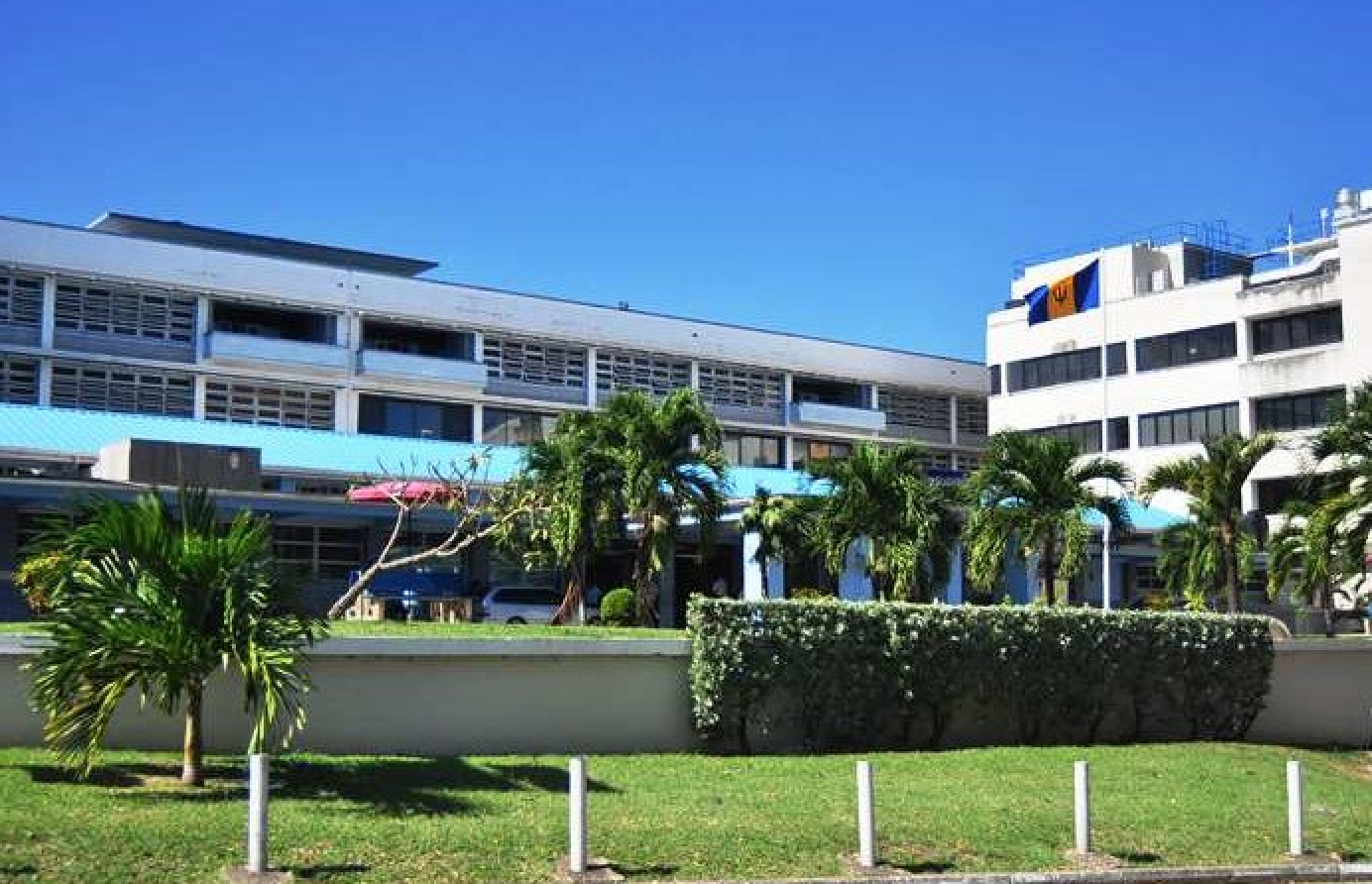Expert Flags Fire and Structural Safety Concerns at Barbados' Queen Elizabeth Hospital

June 26, 2024
Nation's respected engineer Tony Gibbs raises concerns over fire and structural safety at Queen Elizabeth Hospital. Despite a B rating, Gibbs warns of safety issues, urging action on vulnerabilities identified in 1998 study.
One of the nation’s most respected structural engineers has sounded the alarm over fire and structural safety at the island’s sole general hospital, warning that lives could be lost if a blaze were to break out on any of the wards.
Tony Gibbs, who conducted a vulnerability study of the Queen Elizabeth Hospital (QEH) in 1998, told Barbados TODAY that the hospital remains insufficiently safe, particularly regarding fire protection and roofing and suspended floor slabs.
But the QEH top brass countered that a recent PAHO Safe Hospital study index gave the state-owned healthcare facility a B rating.
“The index is the result of an all-encompassing study, which includes a review of fire potential and fire protection systems,” Chief Executive Officer Neil Clark told Barbados TODAY.
The 600-bed Martindale’s Road facility, which replaced the General Hospital after 120 years, marks its 60th anniversary in November.
Gibbs revealed that his 1998 study had proposed short-term measures to be implemented within 12 months, at an estimated cost of $1 million.
“They did nothing,” he said, expressing frustration at the lack of action. “The short-term measures would have cost in 1998, $1 million; not more than that.”
Gibbs, 86, who was awarded the Companion of Honour in 2020 for his contributions to engineering in Barbados and the Caribbean, said that while some structural changes have been made since the hospital’s opening, most of the building remains in its original state.
“The focus of the study was a vulnerability analysis to see how safe the building is. It is not safe enough,” Gibbs stated.
He explained that while the steel frame is protected and would not collapse in a fire, major safety issues persist with the floors.
The engineer highlighted concerns about the SB slabs, made from Barbados clay, steel and concrete, which were popularly used when the hospital was built.
“That floor system is all over the Queen Elizabeth Hospital. There have been failures there. There have been failures there even in recent times,” he said, noting that these involve clay blocks spontaneously breaking and falling.
“So, I have written about that in 1998, and nothing has been done about it. They still have those SB blocks on the floors of the QEH.”
Gibbs cited similar failures in other Barbadian buildings, including banks, schools and warehouses. He recounted a particularly alarming incident at Victoria Hospital in Saint Lucia where roof slabs failed in a paediatric ward shortly after it had been evacuated due to plumbing issues.
The structural expert also pointed out fire safety deficiencies at the QEH, including a lack of fire doors for compartmentalisation and an absence of sprinklers on the wards.
“I think people will die if there is a fire in that hospital,” he warned. “But things can be done about it.”
Gibbs, who designed the Tom Adams Financial Centre housing the Central Bank of Barbados, noted that while the original 1964 structure forms the bulk of the QEH, there have been some additions.
“There have been some additions since then which probably are as good as the 1964 building,” he noted, referring to newer sections like the Lions Eye Care Centre and an extension on the western side.
But these additions do little to reduce the overall fire risk, according to the engineer.
He stressed that modern hospital design standards emphasise building facilities that eliminate the need for evacuation during fires.
This is typically achieved through a combination of sprinklers, compartmentalisation, and careful selection of construction materials.
“The Queen Elizabeth Hospital needs some work done for fire protection. The wards are not separated with fire doors, so you can’t compartmentalise the Queen Elizabeth Hospital,” Gibbs explained.
“We can reasonably be talking about installing sprinklers which would be expensive, but not as expensive as human lives. And we could compartmentalise it. You could do horizontal evacuation from the area which is on fire to another part of the same floor which is not on fire.”
Drawing on his extensive experience assessing Caribbean hospitals for the Pan American Health Organisation (PAHO), Gibbs expressed surprise that even newer hospitals in the region, such as the Mount St John’s Medical Centre in Antigua, have incorporated necessary fire safety features like fire-rated doors, smoke detectors and sprinkler systems.
“So, even a Third World country can do it; must do it,” he said.
But while the QEH’s Chief Executive said management accepted that the hospital’s infrastructure is dated, he drew attention to the PAHO study and other mitigating measures to improve safety at the medical facility.
“It is important to note that the Pan-American Health Organisation conducts periodic assessments on hospitals regionally and in September 2023, the agency conducted its Safe and Green Assessment at the QEH,” Clark said.
“From this most recent assessment, PAHO’s Safe Hospital Index rating for the QEH is a B.
“In addition to this, the QEH routinely conducts inspection and maintenance programmes, and simulation exercises to test the hospitals preparedness and response to incidents that may arise as a consequence of the facilities’ age.”
The hospital boss, who has been on the job since March, stated that almost a year ago, the QEH’s fire response mechanisms were tested and its teams, with assistance from the Barbados Fire Service, were able to contain the situation.
Clark also suggested that the concerns highlighted by structural engineer Gibbs could also be resolved by building a new hospital.
“While these mitigation measures and contingencies have been established across the QEH to protect patients and staff, there is acknowledgement from management that a new hospital with modern design would also address the concerns raised by Mr Gibbs,” the CEO declared.
emmanueljoseph@barbadostoday.bb


